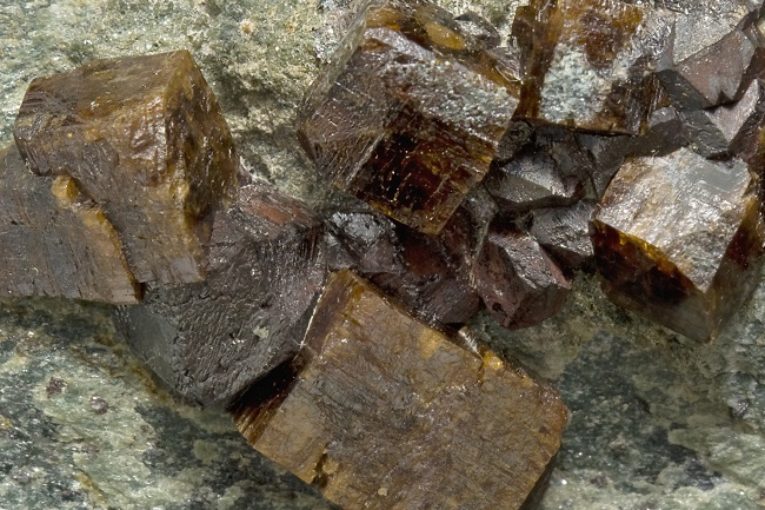Internet will be 1000 times faster using ancient mineral

Researchers from the University of Utah's departments of electrical and computer engineering and physics and astronomy have discovered that a special kind of perovskite, a combination of an organic and inorganic compound that has the same structure as the original mineral, can be layered on a silicon wafer to create a vital component for the communications system of the future. Scientists are investigating how to apply these light frequencies to convey data because of its remarkable potential for increasing the speeds of devices such as cellphones and internet modems.
The new research, led by University of Utah electrical and computer engineering professor Ajay Nahata and physics and astronomy Distinguished Professor Valy Vardeny, was published Monday, Nov. 6 in the latest edition of Nature Communications.
The terahertz range is a band between radio waves and infrared light and utilizes frequencies that span the range from 100 gigahertz to 10,000 gigahertz (a standard cellphone works at just 2.4 gigahertz).
Nahata and Vardeny uncovered an important piece of that puzzle: by depositing a special form of multilayer perovskite onto a silicon wafer, they can modulate terahertz waves passing through it using a simple halogen lamp. Modulating the amplitude of terahertz radiation is important because it is how data in such a communications system would be transmitted.
Previous attempts to do this have usually required the use of an expensive, high-power laser. What makes this demonstration different is that it is not only the lamp power that allows for this modulation but also the specific color of the light. Consequently, they can put different perovskites on the same silicon substrate, where each region could be controlled by different colors from the lamp. This is not easily possible when using conventional semiconductors like silicon.
"Think of it as the difference between something that is binary versus something that has 10 steps," Nahata explains about what this new structure can do. "Silicon responds only to the power in the optical beam but not to the color. It gives you more capabilities to actually do something, say for information processing or whatever the case may be."
Vardeny says what's unique about the type of perovskite they are using is that it is both an inorganic material like rock but also organic like a plastic, making it easy to deposit on silicon while also having the optical properties necessary to make this process possible.
"It's a mismatch," he said. "What we call a 'hybrid.'" Nahata says it's probably at least another 10 years before terahertz technology for communications and computing is used in commercial products, but this new research is a significant milestone to getting there.
"This basic capability is an important step towards getting a full-fledged communications system," Nahata says. "If you want to go from what you're doing today using a modem and standard wireless communications, and then go to a thousand times faster, you're going to have to change the technology dramatically."

